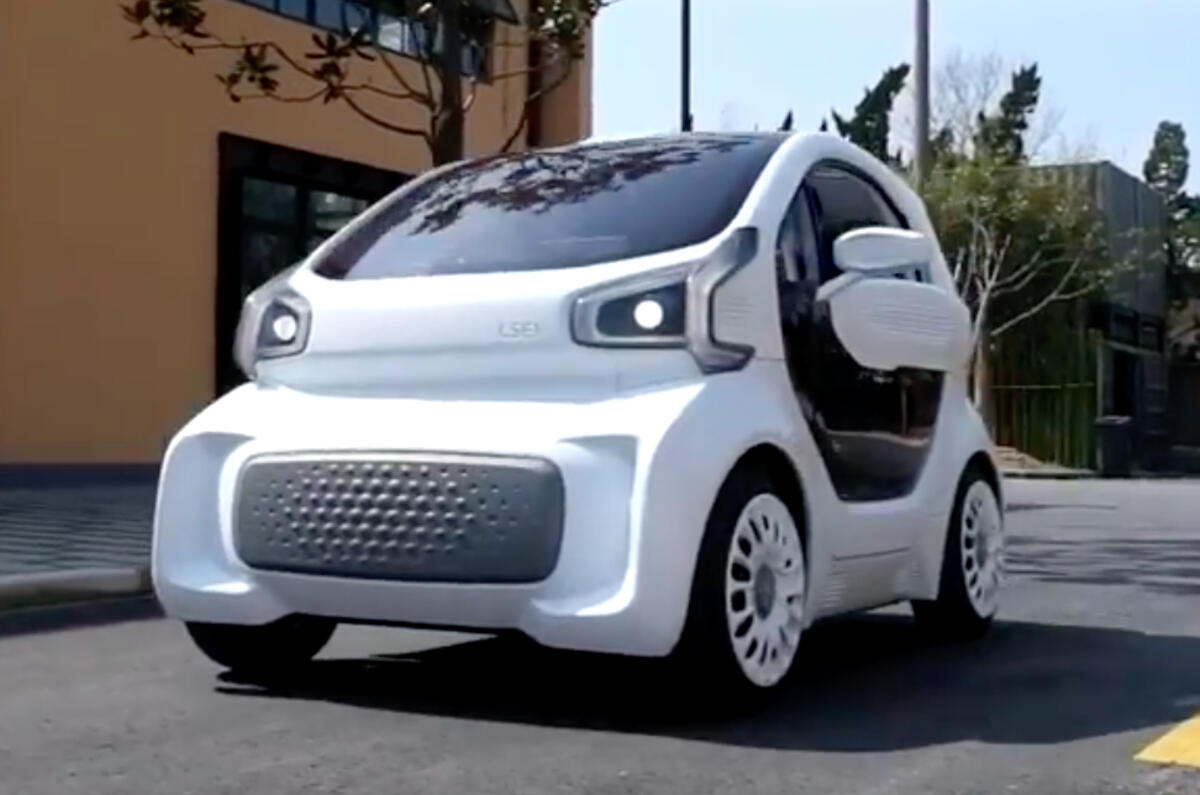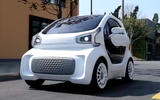The world’s first 3D printed car looks set to make production next year – and its maker believes it previews an “inevitable” change that’ll affect the whole industry.
Produced by Chinese company Polymaker and Italy-based vehicle manufacturer X Electrical Vehicle (XEV), the Smart-sized LSEV is almost entirely made using 3D printing technology, which creates parts from the ground up, layer by layer.
Only a few components, such as the chassis, glass windscreen and tyres, are made using conventional methods. This means that, like most 3D printed products, waste material produced from the production of the vehicle is drastically reduced – something that Polymaker boss Xiaofan Luo said will “inspire more [car] companies to adopt 3D printing”.
3D printing has also enabled Polymaker to reduce the number of plastic parts in the car from 2000 (using conventional built methods) to just 57 – a vital improvement that could help to significantly reduce the environmental impact of car production.
A prototype for the LSEV demonstrates the performance it can offer. The prototype is claimed to be capable of a 93-mile range and can do 43mph. It weighs 450kg – close to half that of a Smart Fortwo.
The LSEV is on display at Shanghai’s China 3D-printing Culture Museum. It will be shown at the Beijing motor show next month.
It took three days to build the prototype and XEV expects production to eventually total around 500 units per year on a single production line. When sales open sometime in late 2019, likely to be in China first, prices are estimated to start at about £7100.
Luo believes that the LSEV will soon be followed by more 3D printed cars. He said that: “The availability of more functional high-performance materials will enable 3D printing to be used on many more applications.” He described 3D printing production as “an inevitable trend in the [car] industry”.
Established manufacturers have recently begun to use 3D printing for component production. Mini offers 3D printed trim that can be completely customised, while Bugatti has developed a 3D printed brake caliper that it claims is 2kg lighter but tougher than the previous part.
More content:








Join the debate
Add your comment
Oooook......!
Well, is it ok, I assume the next thing will be independent crash testing......, nothing wrong with how it looks, it’s transport, city transport.
Just don't crash it
"Only a few components, such as the chassis, glass windscreen and tyres," wow how do print an electric motor, a batttery, wiring loom, airbags etc
Exactly xxxx
I'm sure...
...a 3-D printed car doesn't have to look as bad as this.
If they can get it to print itself
they won't need humans at all. Everyone can stay in, watch TV and get fat on eat dial-out pizza.